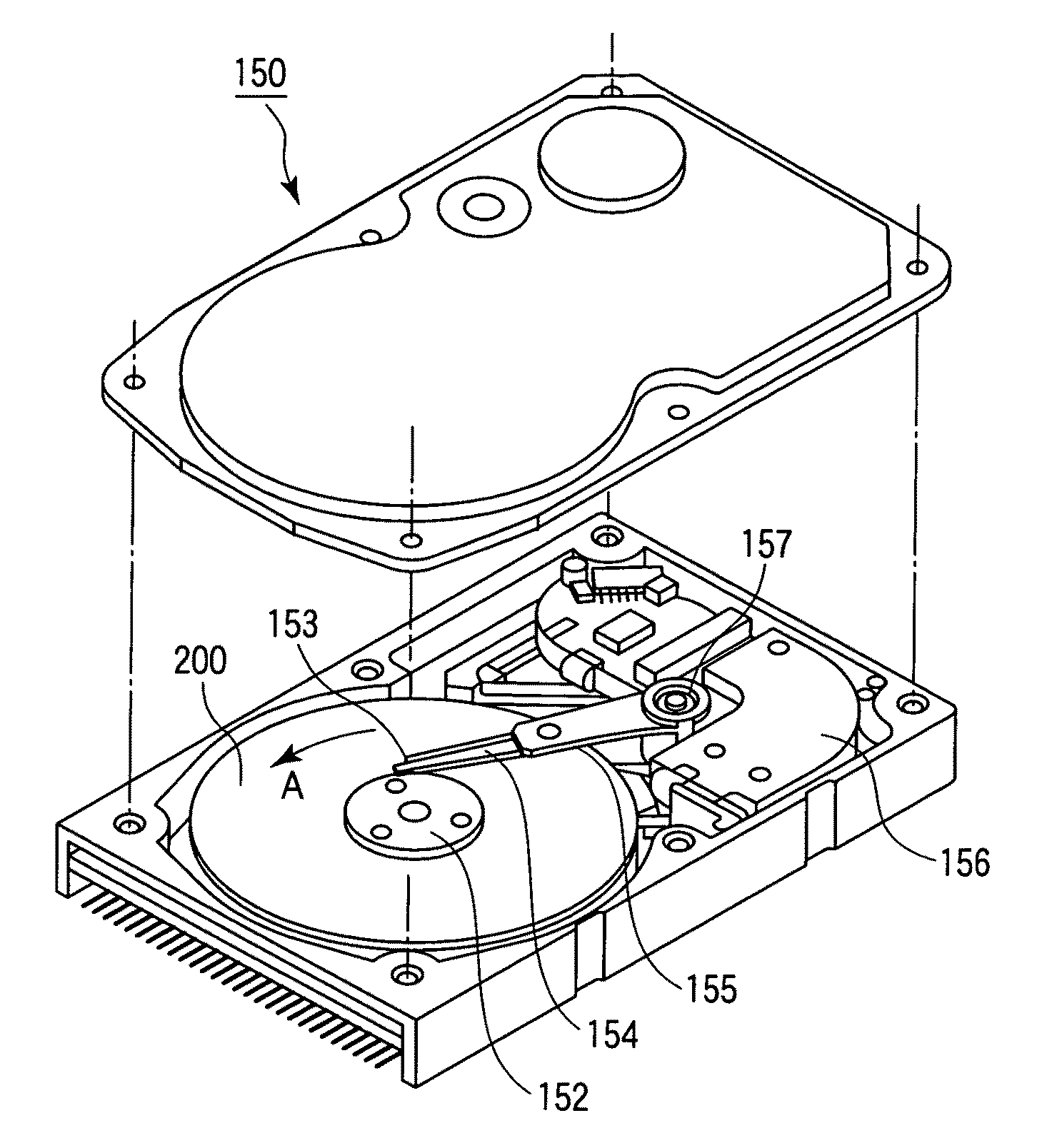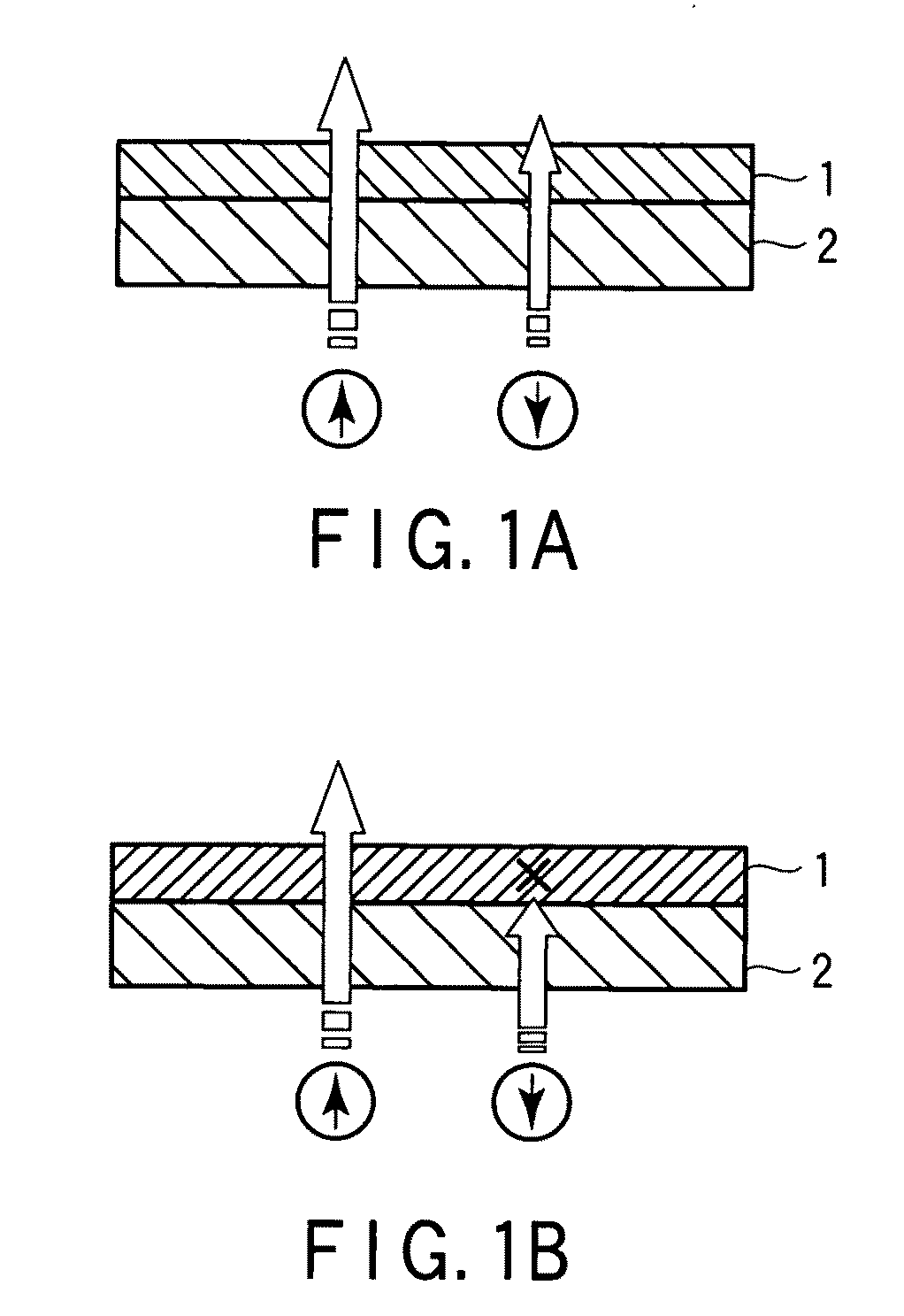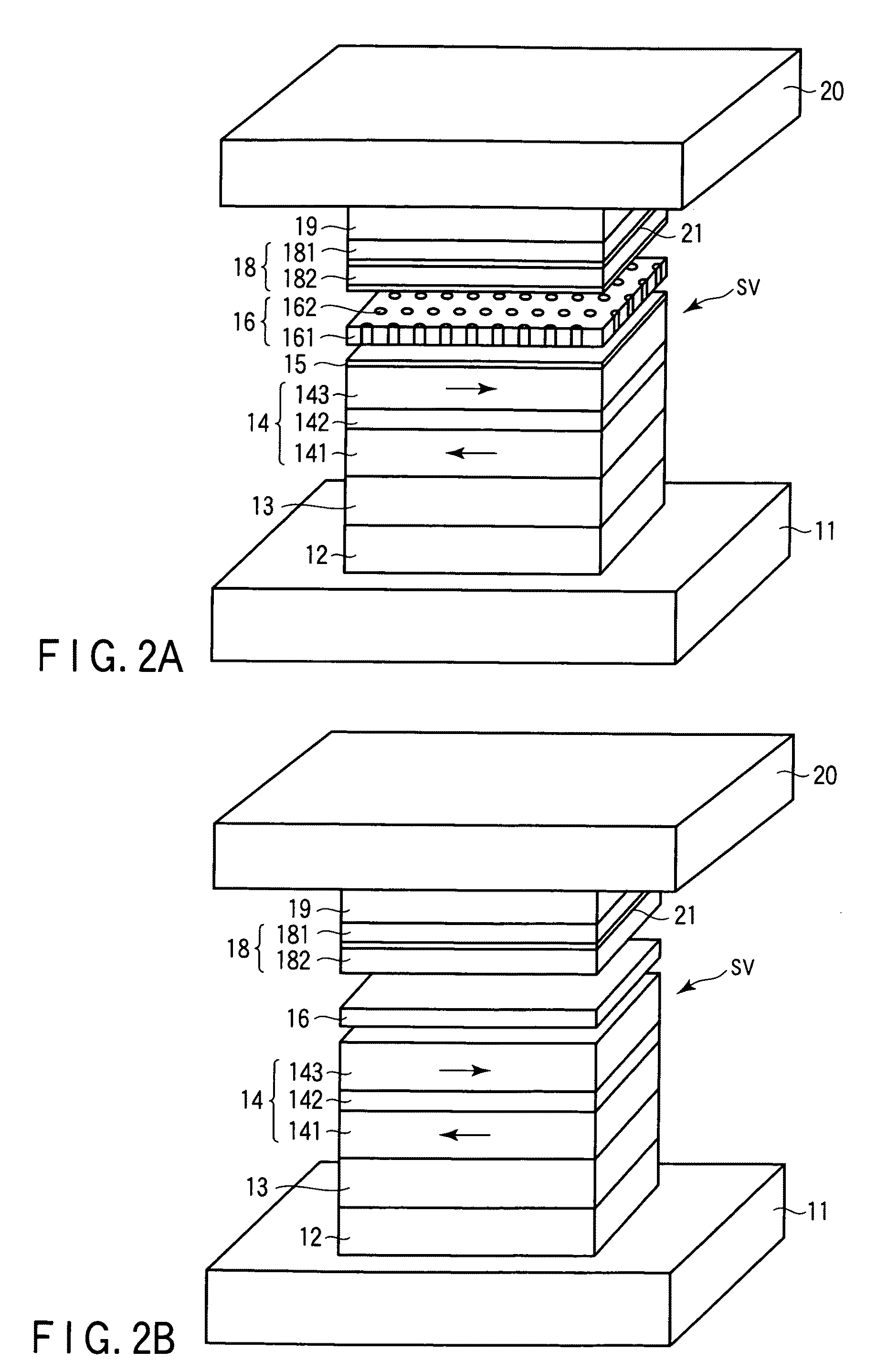Magnetoresistive element and method of manufacturing the same
a technology of magnetoresistive elements and manufacturing methods, applied in nanoinformatics, instruments, record information storage, etc., can solve the problems of insufficient conventional spin filter layer, weak field signal of recording medium, and difficult to distinguish conventional read head
- Summary
- Abstract
- Description
- Claims
- Application Information
AI Technical Summary
Benefits of technology
Problems solved by technology
Method used
Image
Examples
example 1
[0161]The magnetoresistive element shown in FIG. 2B was prepared in this examples. The magnetoresistive element in Example 1 is structured as follows: Lower electrode 11[0162]Underlayer 12: Ta [1 nm] / Ru [2 nm][0163]Pinning layer 13: Ir22Mn78 [7 nm][0164]Pinned layer 14: Co90Fe10 [4 nm] / Ru [0.85 nm] / Co90Fe10 [4 nm][0165]Spacer layer (all metal) 16: Cu [3 nm][0166]Lower free layer 181: Co90Fe10 [2 nm][0167]SF layer 21: (Nitride of Fe80Co20 [0.4 nm])×5 layers prepared by the method in FIGS. 5A to 5E[0168]Upper free layer 182: Co90Fe10 [2 nm][0169]Cap layer 19[0170]Upper electrode 20.
[0171]Now, a method of forming the free layer including the SF layer after the layers to the spacer layer 16 are deposited will be described. To produce a usual spin-valve film, layers are stacked to the space layer 16, and then the free layer is deposited in one step. When the free layer including the SF layer such as in this example is formed, a magnetic layer having half the thickness of the usual free l...
example 2
[0207]The magnetoresistive element shown in FIG. 3B was manufactured by using the following materials:[0208]Lower electrode 11[0209]Underlayer 12: Ta [1 nm] / Ru [2 nm][0210]Pinning layer 13: Ir22Mn78 [7 nm][0211]Lower pinned layer 141: Co90Fe10 [4 nm][0212]Antiferromagnetic coupling layer 142: Ru [0.85 nm][0213]First upper pinned layer 144: Co90Fe10 [2 nm][0214]SF layer 21: (Nitride of Fe80Co20 [0.4 nm])×5 layers prepared by the method in FIGS. 5A to 5E[0215]Second upper pinned layer 145: Co90Fe10 [2 nm][0216]Spacer layer (all metal) 16: Cu [3 nm][0217]Free layer 18: Co90Fe10 [4 nm][0218]Cap layer 19: Cu [1 nm] / Ru [10 nm][0219]Upper electrode 20.
example 3
[0220]The magnetoresistive element shown in FIG. 3A was manufactured by using the following materials:[0221]Lower electrode 11[0222]Underlayer 12: Ta [1 nm] / Ru [2 nm][0223]Pinning layer 13: Ir22Mn78 [7 nm][0224]Lower pinned layer 141: Co90Fe10 [4 nm][0225]Antiferromagnetic coupling layer 142: Ru [0.85 nm][0226]First upper pinned layer 144: Co90Fe10 [2 nm][0227]SF layer 21: (Nitride of Fe80Co20 [0.4 nm])×5 layers prepared by the method in FIGS. 5A to 5E[0228]Second upper pinned layer 145: Co90Fe10 [2 nm][0229]Spacer layer (CCP-NOL) 16: Al2O3 insulating layer 161 and Cu current paths 162[0230]Free layer 18: Co90Fe10 [4 nm][0231]Cap layer 19: Cu [1 nm] / Ru [10 nm][0232]Upper electrode 20.
PUM
 Login to View More
Login to View More Abstract
Description
Claims
Application Information
 Login to View More
Login to View More - R&D
- Intellectual Property
- Life Sciences
- Materials
- Tech Scout
- Unparalleled Data Quality
- Higher Quality Content
- 60% Fewer Hallucinations
Browse by: Latest US Patents, China's latest patents, Technical Efficacy Thesaurus, Application Domain, Technology Topic, Popular Technical Reports.
© 2025 PatSnap. All rights reserved.Legal|Privacy policy|Modern Slavery Act Transparency Statement|Sitemap|About US| Contact US: help@patsnap.com



